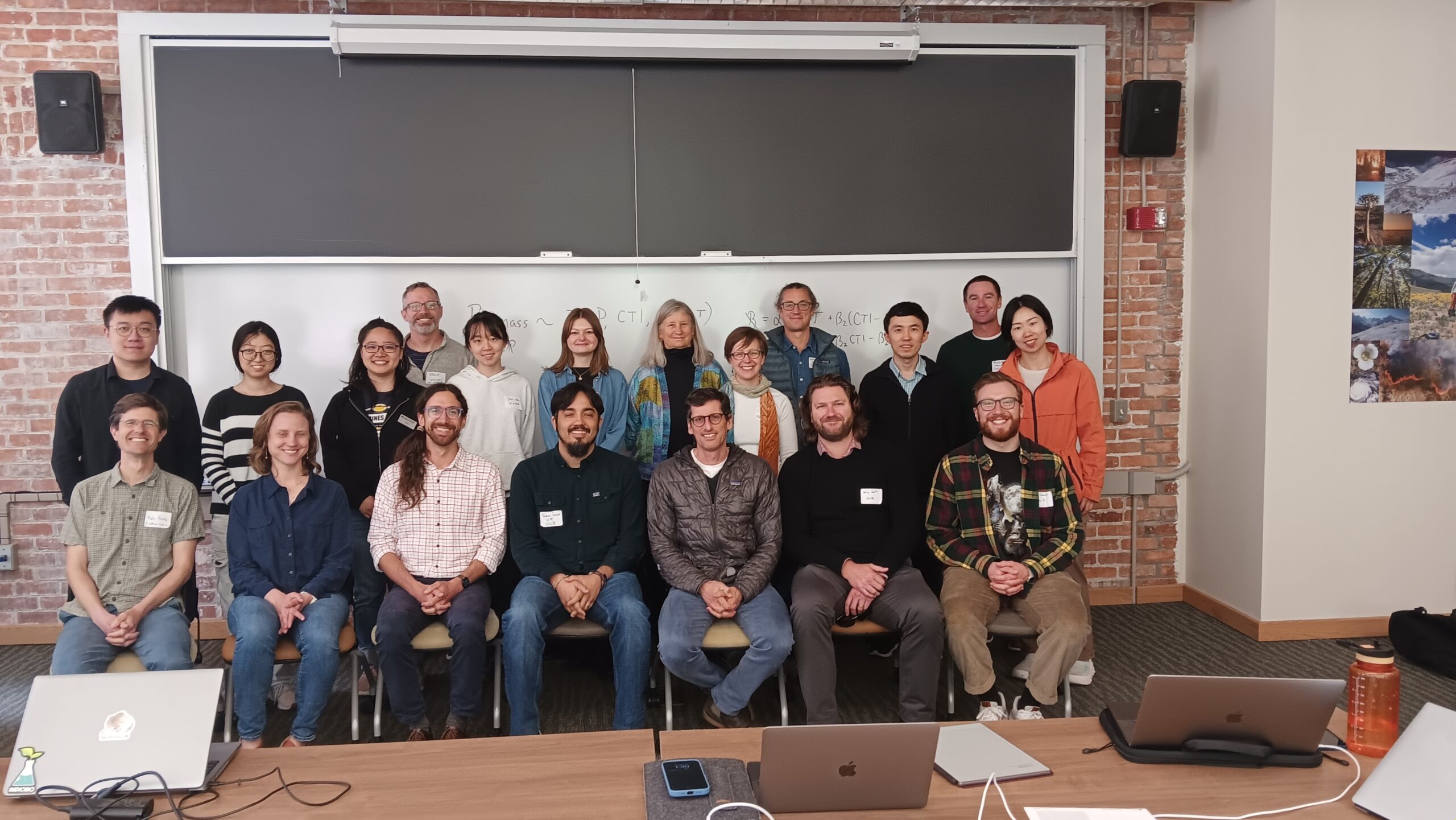Published on December 8, 2024 in Monterey Herald
By Anna FitzGerald Guth, newsroom@montereyherald.com
John Steinbeck once described the corridor between Monterey and Salinas as the “pastures of heaven” for the grasslands flowering with blazing orange California poppies and other local species. But his poetic description now serves as just a snapshot in time of a changing landscape.
Climate change is altering regional grasslands at remarkable speed as species that thrive in hotter, drier conditions dominate the ecosystem, scientists reported in a recent study.
The researchers found this strong trend at test sites across California, with the most notable results near Elkhorn Slough, at UC Santa Cruz and in coastal Mendocino County.
The short-lived grasses at the research sites changed at a similar rate as the climate — unlike the enduring species in forest ecosystems that scientists know lag in responding. The new study, one of the first to report this super-fast shift in grassland biodiversity, offers insights for restoration.
“Climate change has its fingerprints on our ecosystems,” said Yiluan Song, the study’s co-lead author from the University of Michigan. “The strong evidence of this in our study gives us extra reason to mitigate climate change.”
Lead authors Song and Kai Zhu, who started the research at UCSC before moving to the Midwest, collaborated with a large group of mostly California scientists to look at the grassland dynamics across the California Floristic Province. The province is a sprawling biodiversity hotspot in California that spills into Oregon, Baja and Nevada.
Overall, the team investigated the lives of 350 plant species, amid temperature and precipitation changes. They relied on 12 long-term datasets across the state, from the Carrizo Plain in San Luis Obispo County north to the Angelo Coast in Mendocino. They used 20 years of observations from near Elkhorn Slough and 14 years from spots at UC Santa Cruz and Swanton Pacific Ranch, near Davenport.
The results were consistent across eight of the 12 sites: heat-loving species thrived, while those that prefer it wetter and cooler declined. The exact species at play depended on the location, which each had a different climate, soil type, topography and land use history.
The study also pulled data from regional experiments, including from Jasper Ridge Global Change Experiment in San Mateo County, McLaughlin Reserve in Lake County and others in Santa Cruz. Since the researchers saw similar patterns there, they could definitively say that climate change was a driver.
“I think what I was most surprised about was how consistent the results were across multiple sites,” said study author Karen Holl, an ecologist from UC Santa Cruz whose lab provided the observational data for Monterey and Santa Cruz counties. Holl said that in ecology, there’s typically a lot of “noise,” and it’s hard to get clear results amid all the different factors.
The trends at Elkhorn Slough and UC Santa Cruz may be more pronounced because their plant communities showed a high percentage of non-native species. Their “non-serpentine” soil type, which spurs plant growth with a higher concentration of nutrients, might be another factor. (By contrast, experimental zones at McLaughlin and Jasper Ridge with serpentine soils behaved differently.)
California poppies (Eschscholzia californica) were one species of six that fell off at UCSC. California oatgrass (Danthonia californica), a native perennial grass, was one of 11 species that declined at Elkhorn Slough. Purple false brome (Brachypodium distachyon) and ripgut brome (Bromus diandrus), widespread non-native annual grasses, were among four species that increased at both locations.
The study may have broad implications for grassland restoration practices. It won’t make sense in some cases to restore a species that prefers a colder climate with more rainfall, knowing that species will only suffer long-term, for example.
“We’re used to finding certain species in certain places, and historically, the whole goal of conservation was to keep them there,” said Peter Adler, an ecologist from Utah State University who was not involved in the research. “And so, from that perspective, the prospect of these communities changing quite rapidly is a little frightening.”
Adler, who found the study exemplary, emphasized that plant communities’ species composition has ripple effects. “We’re really talking about habitat,” he said. “We’re really talking about the basic character of these ecosystems that lots of other species depend on and that people depend on, in many ways, from recreation to carbon cycling.”
Zhu and Song believe that other grasslands elsewhere will reflect their unique climates in a similar way. Zhu envisions a future study comparing the results from the California grasslands with other types of ecosystems. The contrast with forest ecosystems is stark already, given that it can take a long time for changes in temperature and precipitation to affect forest biodiversity.
“The next step would be to expand the assessment to more ecosystems,” Zhu said, “So we have some direct comparison with the same method.”








